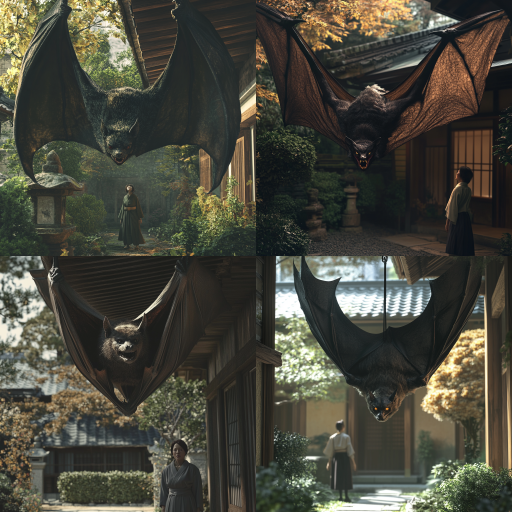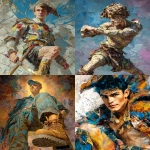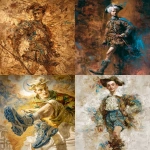Explore the Best AI Image Gallery

AI-Generated Visual Content: Navigating Creativity and Ethics
The rise of artificial intelligence (AI) has ushered in a new era for visual content creation. As the technology underlying AI improves, its ability to generate high-quality images, videos, and even entire animations has ignited conversations about creativity, ownership, and ethical usage. This blog post explores the various aspects of AI-generated visual content, its impact on the creative industry, potential applications, ethical considerations, and emerging trends that will shape the future of this fascinating field.
The Impact of AI on the Creative Industry
AI-generated visual content has already begun to transform the creative landscape. Artists, designers, and content creators are leveraging AI tools to enhance their productivity and push the boundaries of their creative capabilities. Some notable impacts include:
- Enhanced Creativity: AI can serve as a collaborator, offering suggestions and variations on artistic ideas, which can lead to inspiration and innovative outcomes.
- Efficiency: Tasks that were once time-consuming, like photo editing or video production, can now be performed more rapidly with the assistance of AI, allowing creatives to focus on ideation.
- Accessibility: AI tools democratize access to high-quality content creation, enabling individuals with limited resources or skills to produce professional-looking visuals.
- New Aesthetics: AI has the potential to create entirely new styles and forms of art, merging various influences that reflect a digital-native culture.
Potential Uses of AI-Generated Visual Content
AI-generated visuals are not restricted to art; they have far-reaching applications across multiple industries:
- Advertising: Companies are using AI to generate stunning visuals for their marketing campaigns, enhancing engagement and conversion rates.
- Entertainment: AI can assist in creating storyboards, concept art, and even entire animated sequences, revolutionizing the film and gaming industries.
- Fashion: AI-generated designs can predict trends, create virtual fashion shows, and even produce unique clothing patterns that would be impossible for a human designer to envision.
- Architecture: Virtual renderings produced by AI tools allow architects to visualize concepts and iterate designs more efficiently.
- Personalization: From creating tailored user experiences in apps to individualized content on social media, AI allows brands to connect with consumers on a more personal level.
Ethical Considerations
While the benefits of AI-generated content are substantial, ethical concerns must also be addressed. Here are some key issues to consider:
- Copyright and Ownership: The question of who owns an AI-generated image remains ambiguous. Copyright laws have not yet adapted to address works created by machines, leading to uncertainties for creators, businesses, and consumers alike.
- Authenticity: As AI-generated images become indistinguishable from human-made art, the value of authenticity in art is called into question. Are viewers entitled to know if a piece is AI-generated?
- Bias in AI: AI training datasets can contain biases, leading to stereotyping or misrepresentation in generated visuals. This raises important questions about accountability and the ethical obligations of developers.
- Job Displacement: As AI tools become more capable, there are concerns over potential job loss for creative professionals. Striking a balance between embracing innovation and preserving employment is crucial.
Future Trends
Looking ahead, several trends are likely to emerge regarding AI-generated visual content:
- Improved Collaboration: We can expect more intuitive and sophisticated AI tools that enhance human creativity rather than replace it.
- Legal Frameworks: As the landscape evolves, legal frameworks will likely adapt to address copyright and ownership issues related to AI-generated works.
- Sustainable Practices: With a growing focus on sustainability, AI could help in designing environmentally friendly products and efficient processes, impacting the visual content associated with these initiatives.
- Augmented Reality: AI-generated content will likely play an essential role in AR experiences, making immersive storytelling visually stunning and personalized.
- Greater Inclusivity: Future AI models may focus on combating bias and promoting diversity in visual content, potentially reshaping how art represents various communities.
Conclusion
AI-generated visual content is redefining creativity and posing significant questions about ethics and authenticity. As technology advances, it will be essential for artists, businesses, and policymakers to navigate these challenges thoughtfully and collaboratively. Embracing the benefits while addressing the ethical implications will be crucial to harnessing AI's full potential in the creative industry.



](https://images.ai-img.art/thumbnails/150/3a60737a5b67fa252207ad1ae6db245a26284f53fb5846996bb34515b39ff269.webp)




](https://images.ai-img.art/thumbnails/150/8c3bd422d50d35735d8fb33bd314a79e30e5b150129d5d09bdad822a2007593f.webp)
](https://images.ai-img.art/thumbnails/150/1614d64dd7156c95db952258978be809eb3db8cea4453fec69c49cbdfe63fa94.webp)


